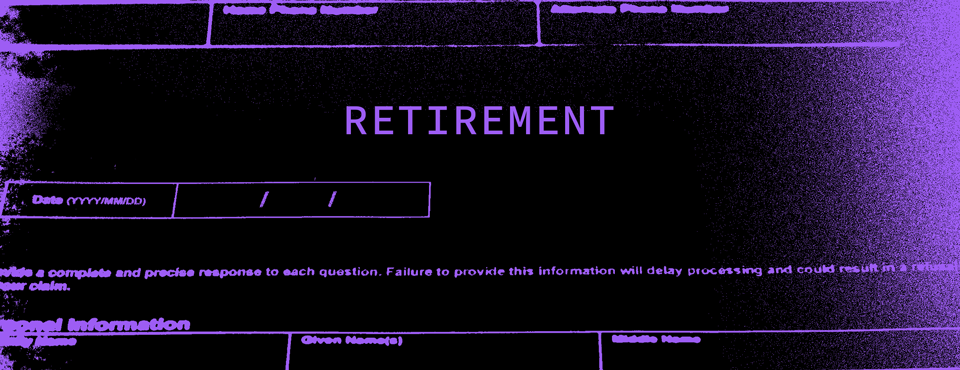A recent report from the U.S. General Accounting Office calls on the IRS to address conflicts of interest among retirement advisors and highlights the complex regulatory requirements and uneven enforcement mechanisms facing fiduciaries.
GAO’s report proposes additional enforcement mechanisms for individual retirement accounts. While this may improve outcomes for participants, recommending further regulation and oversight at this time poses additional challenges.
The Department of Labor interprets and enforces the Employee Retirement Income Security Act with respect to employer-sponsored plans such as 401(k)s, but not with respect to IRAs. The IRS has enforcement authority over both employer plans and IRA fiduciaries. The Securities and Exchange Commission and the Financial Industry Regulatory Authority also regulate this area. This creates a complex and dynamic regulatory environment with overlapping requirements.
Under ERISA, fiduciaries must act in the best interests of participants and beneficiaries and limit transactions that create conflicts of interest. Many financial professionals have avoided being considered fiduciaries to circumvent these prohibitions, rather than comply with the complex requirements to meet the prohibited transaction exemption. The DOL finalized a rule expanding the definition of fiduciary advice in 2016, but that rule was ultimately invalidated. In 2023, the DOL proposed a new fiduciary rule, the Retirement Security Rule, but two Texas district courts have since blocked the rule.
In recent years, the DOL’s attempts to clarify and expand the scope of the fiduciary rule through regulation have been fraught with difficulties and remain unresolved.
The IRS, on the other hand, enforces the rules through excise taxes on prohibited transactions and relies heavily on self-reporting. The DOL uses audits and investigations to identify violations, impose civil and criminal penalties, and refer violations to the IRS for excise tax liability.
If the IRS follows GAO’s advice, it will require additional resources to develop investigation processes and reconciliation procedures. The IRS received more funding for enforcement under the Inflation Control Act, but that funding could change next year.
Develop exemptions and model disclosures that can be provided to potential IRA customers to prevent these prohibited transactions from occurring, as IRA customers are probably in the best position to identify such transactions before they occur. That could be a better approach.
The regulations would require advisors to provide clients with a brief written explanation of what types of coverage are and are not allowed under approved IRS models. It will put pressure on advisers to avoid indemnity arrangements that violate them. It will also provide information to help consumers avoid advisers who violate the rules.
Plan sponsors and fiduciaries sitting on the sidelines waiting for certainty about the DOL’s fiduciary rulemaking efforts may consider taking several different steps.
Renegotiate service provider agreements. Consider updating contracts with financial services vendors and other plan service providers to include language that takes advantage of the newly prohibited transaction exemptions and prohibits the cross-selling of services to plan participants. Please. Doing so may make it easier for plan fiduciaries to identify and avoid prohibited transactions.
During the process, beyond the required plan fee disclosures, ensure that the plan fiduciary understands the variable compensation, sales-based incentives, and bonuses that may be paid to the plan service provider, and the compensation arrangements that apply to the product. Please consider discussing.
Reinstate participant education programs. Consider reconsidering whether to implement or re-implement your participant education efforts with limits in place to prevent cross-selling and reduce conflicts of interest. This is particularly appropriate for plans that have reduced or eliminated participating education programs in response to the 2016 regulations. If you restart such programs, consider limiting the marketing of other non-planning services to participants to address the conflict issues identified in the GAO report.
Evaluate your automatic IRA arrangement. Consider evaluating a mechanism to automatically roll over accounts with low balances if participants are unresponsive. Especially since the higher automatic rollover limit of $7,000 under SECURE 2.0 that many plans have implemented can increase the amount of automatic rollovers.
Consider evaluating whether the fees an automatic IRA provider charges participants are reasonable compared to the market. Be aware that using a provider that is affiliated with another plan vendor may improve operational efficiency and justify higher rates. It may also be appropriate, although not necessarily required, to evaluate the IRA’s default investment options on similar criteria as the plan’s qualified default investment alternatives.
Check communications to separate participants. Consider whether the materials provided to the intended participants are appropriate, clearly explain the differences between employer-sponsored retirement plans and IRAs, and address the communication gaps identified in the GAO report. deal with. The average participant and many financial advisors may not understand the difference between leaving funds in an employer plan and moving them to an IRA.
Explain to participants the fees they will be charged if they keep their funds on track and help them understand both the potential investment returns as well as the fees they will be charged and where they will put their funds in retirement. Stock up on learning materials to help you make better decisions.
While the definition and regulation of fiduciaries remains unclear for both employer-sponsored retirement plans and IRAs, the steps above provide a starting point for plan fiduciaries to protect themselves and their participants. Plan fiduciaries can protect themselves by taking thoughtful, well-documented steps to ensure vendors are acting appropriately and educating participants. .
This article does not necessarily reflect the opinion of Bloomberg Industry Group, Inc., the publisher of Bloomberg Law and Bloomberg Tax, or its owners.
Author information
Carly Gray is a shareholder at Ogletree Deakins in Washington, DC, where she focuses on employee benefits and executive compensation issues.
Katrina Clingerman is a shareholder at Ogletree Deakins in Indianapolis, where she specializes in employee benefits.
Write to us: Author Guidelines



